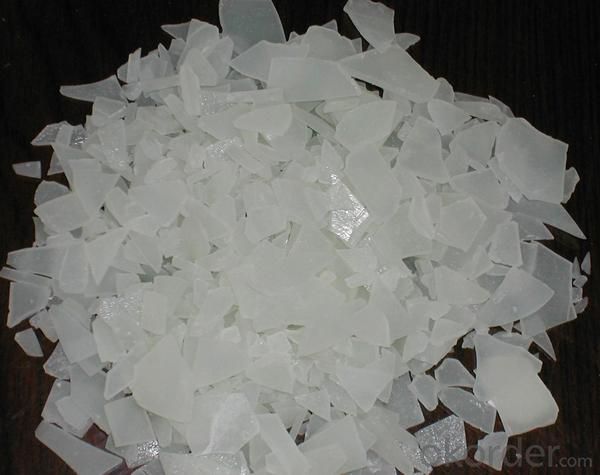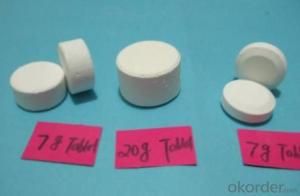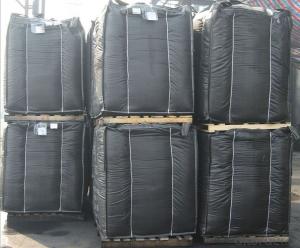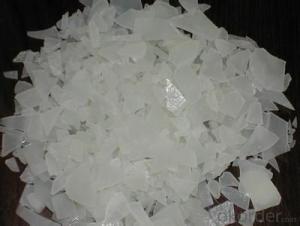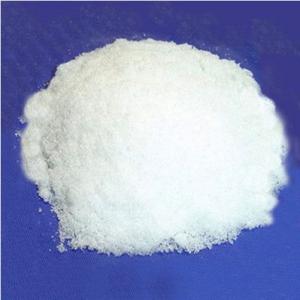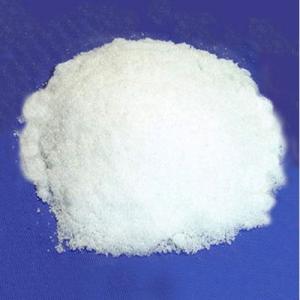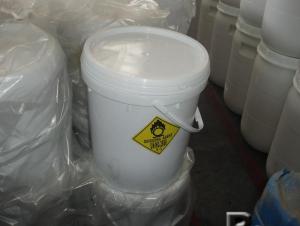Flake Powder Aluminum Sulfate
- Loading Port:
- Qingdao
- Payment Terms:
- TT OR LC
- Min Order Qty:
- -
- Supply Capability:
- 12000 m.t./month
OKorder Service Pledge
OKorder Financial Service
You Might Also Like
1. Chemical and Physical Properties:
Product name: Aluminium Sulphate or Aluminum Sulfate
Shape: Flakes or Granular or Powder.
EINECS NO.:233-135-0
CAS No.: 10043-01-3
HS.Code: 28332200
Molecular Formula: Al2(SO4)3
Appearance:It is white or grey flake,particle or massive crystallization.
Apt to cake after moisture absorption when laid in air for a long time.A little green because of Fe2+ ,yellow when Fe2+ is oxided to Fe3+.Soluble in water easily,and water solution is acid.
2. Specification:
Standard: HG/T 2225-2001 and HG/T 2227-2004
Items | Specifications | |||
I Type:Low Ferrous/Low Iron | II Type:Non-Ferrous/Iron-free | |||
First Class | Qualified | First Class | Qualified | |
Al2O3 % ≥ | 15.8 | 15.6 | 17 | 16 |
Ferrous(Fe )% ≤ | 0.5 | 0.7 | 0.005 | 0.01 |
Water Insolube % ≤ | 0.1 | 0.15 | 0.1 | 0.15 |
PH (1% aqueous solution) ≥ | 3.0 | 3.0 | 3.0 | 3.0 |
Arsenic(As) %≤ | 0.0005 | 0.0005 | ||
Heavy metal (Pb) %≤ | 0.002 | 0.002 | ||
3.Applications:
Water effluent treatment system
It's used for purification of drinking water and wastewater treatment by settling of impurities by
means of precipitation and flocculation.
Paper Industry
It helps in sizing of paper at neutral and alkaline pH, thus improving paper quality (reducing spots
and holes and improving sheet formation and strength) and sizing efficiency.
Textile Industry
It is used for color fixing in Naphthol based dyes for cotton fabric.
Other Uses
Leather tanning, lubricating compositions, fire retardants; decolorizing agent in petroleum, deodorizer; food additive; firming agent; dyeing mordant; foaming agent in firefighting foams; fireproofing cloth; catalyst; pH control; waterproofing concrete; aluminum compounds, zeolites etc.
4. Package:
Packaging Detail: PP/PE 50kg/bag;25kg/bag;Jumbo bag or according to customers' requirements.
20-25MT will be loaded in per 20'FCL container.
5. Attention and Storage:
The product is liable to absorb moisture and clot due to long-term exposure, so shady, cool and ventilated environment is needed.
- Q: In the chemical calculation, the quality of the catalyst should not be counted before and after the reaction
- Half is not easy to save trouble
- Q: Will the chemical catalyst not reduce that?
- Why is it done? Although the catalyst does not react chemically, the catalyst itself is deteriorated and is not always used
- Q: How are a catalyst and an intermediate similar? How are they different?
- A catalyst speeds up the rate of a reaction by lowering the activation energy barrier which is, presumably, the energy required to achieve the reaction intermediate. Catalysts are also not consumed in the reaction, they are regenerated towards the end. A reaction intermediate is a configuration that a molecule takes prior to achieving it's lowest energy form which would signify the end of the reaction. Intermediate usually are hard to isolate because of the incentive to go to the most stable configuration. How are they different? A catalyst is not a part of the reaction product and it doesn't get consumed. An intermediate in a reaction is transformed into the product. How are they similar? Well, catalysts drive the reaction and make it easier for the reaction for follow through. Since intermediates are high energy and thermodynamics tells us that low energy is favorable, the incentive for a high energy intermediate to drive down to it's stable for can also drive a reaction. I hope that helps. I hope it makes sense.
- Q: I was hoping to buy a land rover lr4 or lr2, but with the lr4 having gas mileage in the mid teens, i wanted to know if there is a way to improve it. I dont drive on the highway too much. I'd like to know if there is anything else to improve mileage too. I drive a lot of people around for functions, family, and others and I looked at other suvs but those two looked the best.
- Fuel Catalyst
- Q: Why extract the genome, the digestion is always not cut
- Enzymes are proteins that are highly specific and catalyzed in living cells, also known as biocatalysts, which are produced by the organism itself. In the metabolic process, almost all chemical reactions are in the enzyme Catalyzed, and the conditions are mild, the reaction efficiency is extremely high, so that the various substances in the body in constant metabolism, in this sense, there is no enzyme without life. Intracellular synthesis of enzymes mainly in the cell from the catalytic The role of some enzymes after the release into the blood or digestive tract, and where to play its catalytic role, artificial extraction of enzymes in the appropriate conditions can also be in the test tube of its special substrate catalytic role.
- Q: Please name 2 common examples of catalysts.Thank you?
- For the best answers, search on this site https://shorturl.im/axpfK Weird how such rare names can be so famous... Gary Hugh Dennis Rupert Ian Fred Lawrence Tony Noel Ray Neil Wayne Jeremy Bruce Russell Lisa Kirsty Harmony Erica Hazel Josephine Stella Pearl Evangeline Miriam Diana Fiona Penelope Margaret Delilah
- Q: When you write a chemical equation, how do you want to add "catalyst" and "?" When you do not have to write?
- This is the need for your memory, write a few times, will naturally cooked
- Q: how can you tell when a substance serves as a catalyst?
- It makes a reaction run faster and better AND it is not used up by the reaction
- Q: Now, i am studying for my biology exam in 3 weeks time...i stumbled upon catalase, and then checked my book its catalyst...now im confused...is there a different among these 2 terms? i think..catalyst is the when a substance brings up or about a chemical reaction without using itself up and then catalase breaks down the toxic by-product of metabolism, hydrogen peroxide, into water and oxygen.Or am i wrong?please explain what is catalyst and catalase in biology or are they the same, just differently?
- an enzyme that decomposes hydrogen peroxide into oxygen and water.a substance that causes or accelerates a chemical reaction without itself being affected. To put thing simply, a catalyst is any substance that speeds up a chemical reaction. These can be natural or manmade. Catalase is actually a specific type of naturally-occuring catalyst, an enzyme in cells that decomposes hydrogen peroxide (Which is extremely toxic to life!) into harmless components. Catalase enzymes are highly concentrated in the aptly named cell organelles known as peroxisomes. Just remember- if the word ends in -ase, it's a type of enzyme! :) Hope this information helps!
- Q: I have just spent CAN$550 to replace a catalyst converter at one end of the muffler. The repairman said I need to replace the oxygen sensor very soon, otherwise, the C.C. will be gone again. Is that true... can someone confirm this for me. Thanks.
- ok its not catalyst converter its catalytic converter. next i have not read one answer that is correct a couple are close but no cigar. ok the 02 sensor senses the oxygen content in the exhaust gasses. using the oxygen content it can determine if the engine is running to rich or to lean. the ecm (computer) wants to keep the engine at optimum fuel mileage or keep it stoichometric meaning fuel to air ratio of 14.7:1 the ecm can adjust fuel air ratios by changing the pulse width and the duty cycle or on off time of the injector.it also uses several other sensors to help it like intake air temp (iat) coolant temp (cts) mass air readings if equipped (MAF) or manifold absolute pressure (map) so its not just the oxygen sensor it can make adjustments as need. anyways the oxygen sensor uses a .1 to .9 volt range signal anything below .450 is lean anything above .450 is rich and .4 to .5 is perfect. but ur engine constantly changes and the 02 readings change constantly new cars can take readings as fast as one or two times a second older cars are alittle slower. anyways only replace the 02 sensor if the car is telling u its bad meaning u have a check engine light on and a code that says P 0 . . . bank one sensor one ckt malfunction or bank 2 sensor 1 ckt malfunction u get the idea unless that happens ur 02's are good leave them alone. when they do go bad ur car will run rich and puke alittle black smoke out the exhaust and ur car will smell like rotten eggs. NOW the cat its job is to heat up to 600 + degreees F and burn unburnt fuel from the combustion cycle of the engine when an engine does not burn all its fuel its running rich and bad fuel milage occurs. if the 02 sensor goes out it can heat the cat red hot as the extra fuel being burnt inside it can become extremely hot. most 02 sensor for most vehicles run around 60 bucks not expensive. a car can have 1 to 4 of these and YES if bad and left for too long and can ruin a cat converter.
Send your message to us
Flake Powder Aluminum Sulfate
- Loading Port:
- Qingdao
- Payment Terms:
- TT OR LC
- Min Order Qty:
- -
- Supply Capability:
- 12000 m.t./month
OKorder Service Pledge
OKorder Financial Service
Similar products
Hot products
Hot Searches

